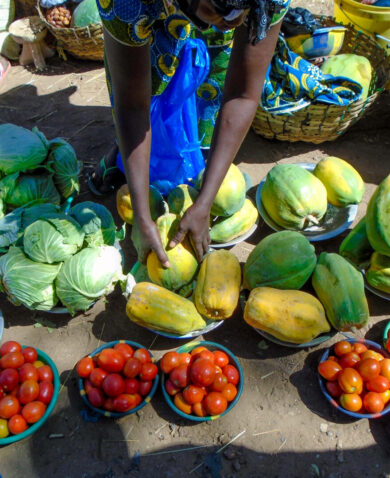2. Walk the Talk
To take a CLA approach to development, we cannot operate on autopilot. We have to internalize the goals of our project and be relentless in looking for new and better ways to achieve those goals.
The best way to internalize your project’s goals is to walk the talk in everything you do. YLA is about empowering youth and we take that message to heart in our daily operations. For example, when it came time to design and furnish our office, we did not buy foreign-made fixtures. Instead, we awarded the work to a partnership between a youth-owned design firm and a vocational training school to create jobs and learning opportunities for students. We also have a target of reaching beneficiaries who are 70 percent women, so we saw it as a problem when we held a recruit for project drivers and did not have any female applicants. After opening a new recruit that specifically stated that women can and should apply, we were blown away by the result and now have three women on our staff of seven drivers. By holding ourselves to the same standard that we are asking of our grantees, partners, and beneficiaries, we become more in tune with our project’s goals and can make sure we are truly executing those goals rather than going through the motions.
3. Design in Reverse
Designing in reverse means that before beginning any initiative, we start by asking our partners and beneficiaries what they need. It is easy to begin with preconceived notions or to focus on our own agendas and indicator targets, but it is important to set that aside and listen to what is working, what is not, and adapt if we want to be effective.
YLA primarily operates through small grants. At the beginning, many partners approached YLA by “selling” concepts to fund their organizations that explicitly met YLA’s contractual outcomes, rather than their own business objectives. Sustainability and innovation come from enabling the private sector to drive the design process by focusing on what they need to successfully function as a business. Therefore, one of the main pivots has been to design in reverse by embracing partner-led implementation whereby a greater emphasis is placed on improving the business profitability and efficiencies of our partners that in turn enable YLA to meet its contractual objectives. By meeting partners’ business needs, YLA meets youth at the natural nexus between where they are and the market demand, creating a dynamic that is more organic, profitable, and sustainable.
Truly adopting CLA will require abandoning the fallacy that development professionals can accurately predict how a project’s three to five years will play out. It is time to recognize that none of us has a crystal ball, and open ourselves up to a process of collaborating, learning, and adapting so we can all do development better.














